Taurus 82 at 25 yards
A couple of weeks ago I acquired a large shipment of surplus Taurus 82 revolvers,
and since they were so cheap, I kept a few for myself to experiment. The first
time I took them to the range, I shot them at 25 yards
and discovered that (a) ammunition mattered a lot for point of impact and groups sizes,
and (b) in almost all cases the point of impact was off - differently so for
different ammunition brands.
So this time I wanted to shoot my own reloads - which tend to be quite a bit more
accurate than inexpensive factory ammunition - and compare it to a
Smith & Wesson revolver.
Day 1
The gun was pulled out of the five I kept for myself at random, and was this:
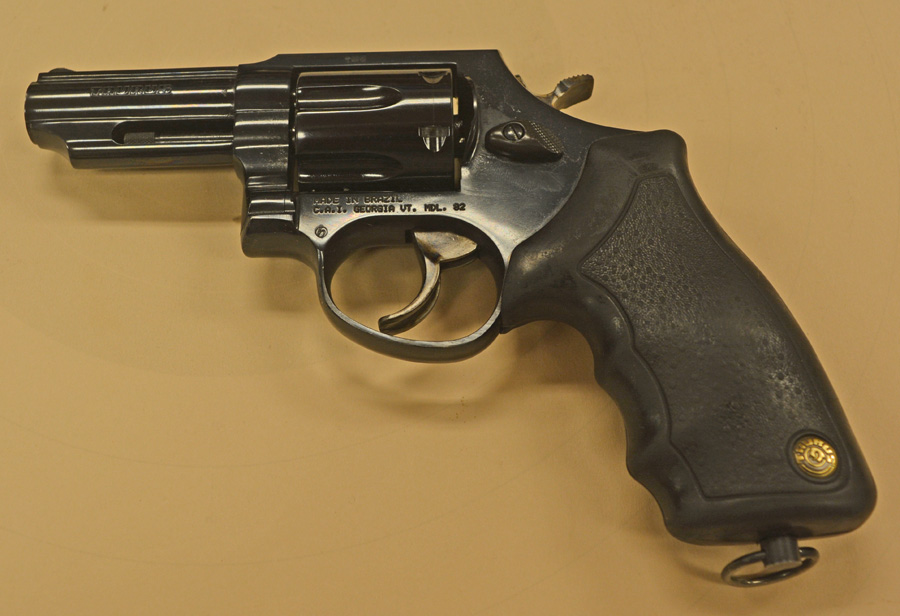
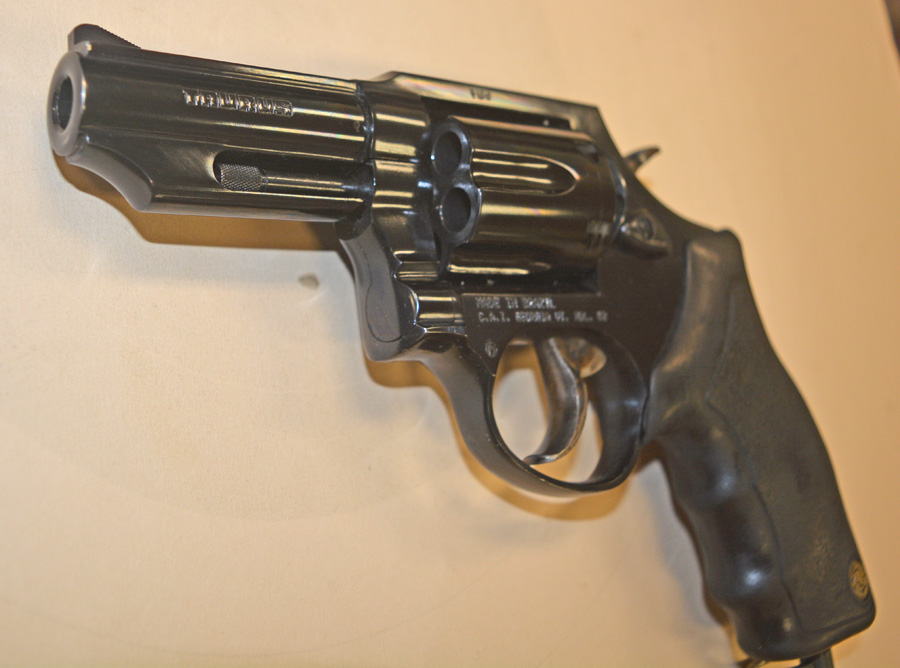
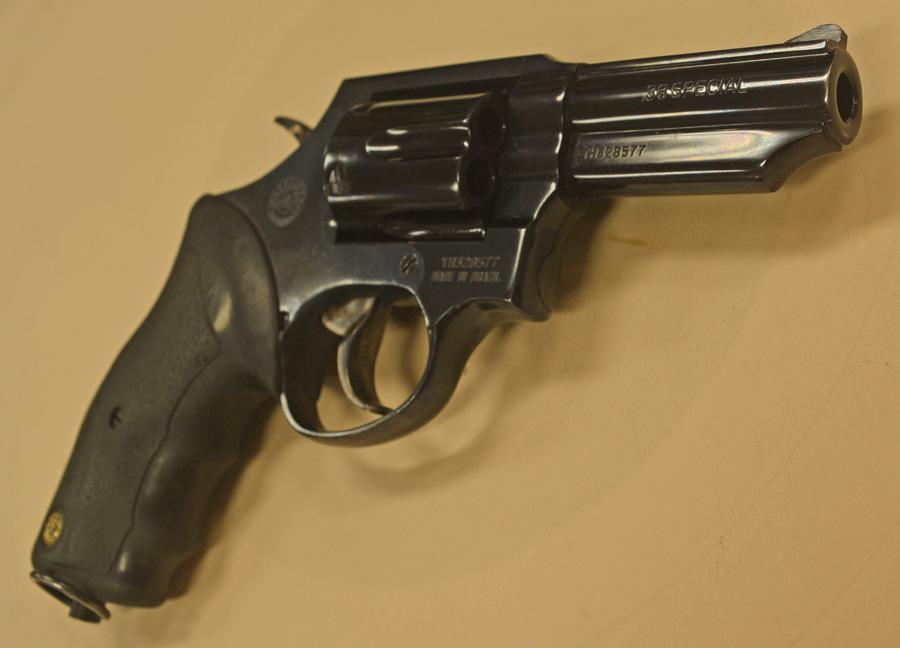
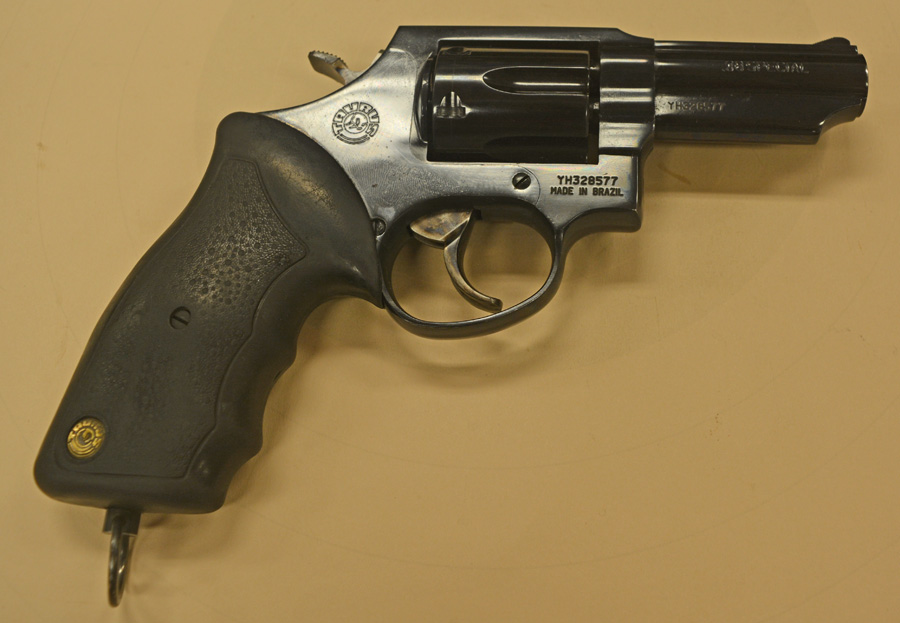
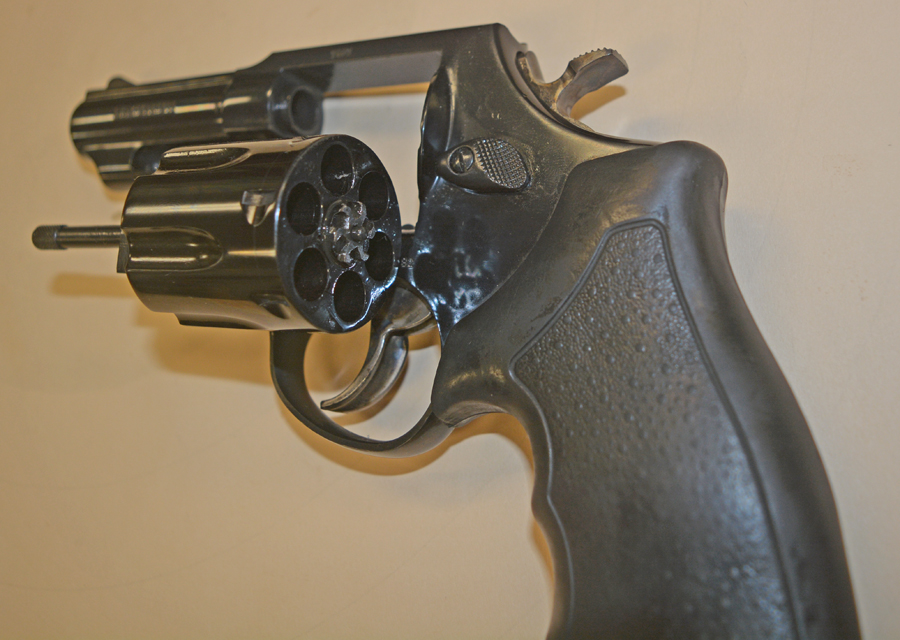
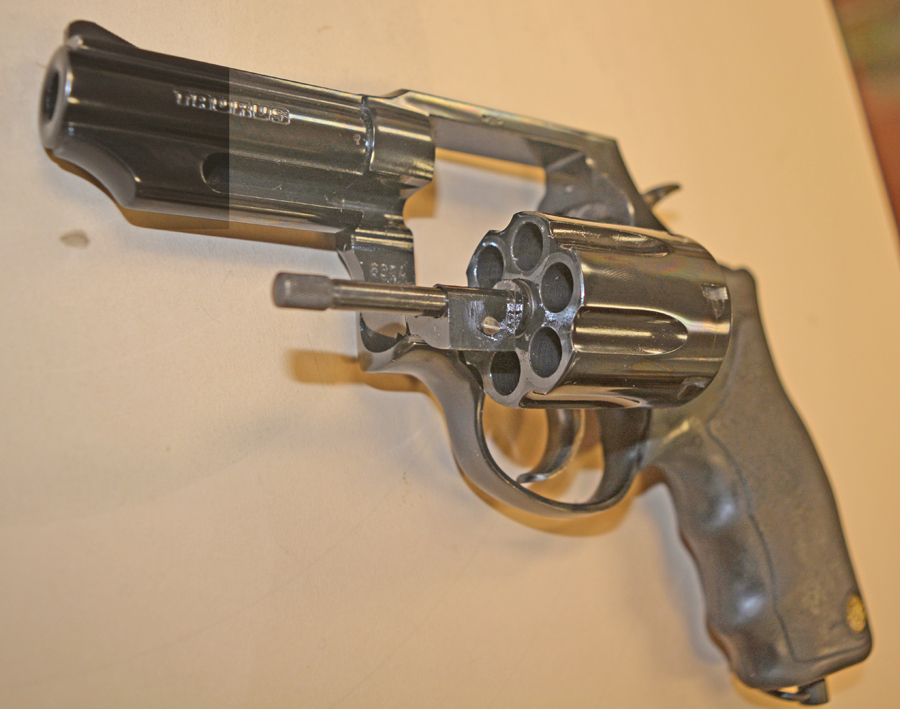
The gun had super-nice trigger - indistringuishable from Smith & Wesson - which clocked at 3.5lb.

During the previous session these were the results at 10 yards:

At the range, from the rest at 25 yards, I fired 25 rounds of Hornady 148 grain lead wadcutter bullet over 2.8 grains of Bullseye...
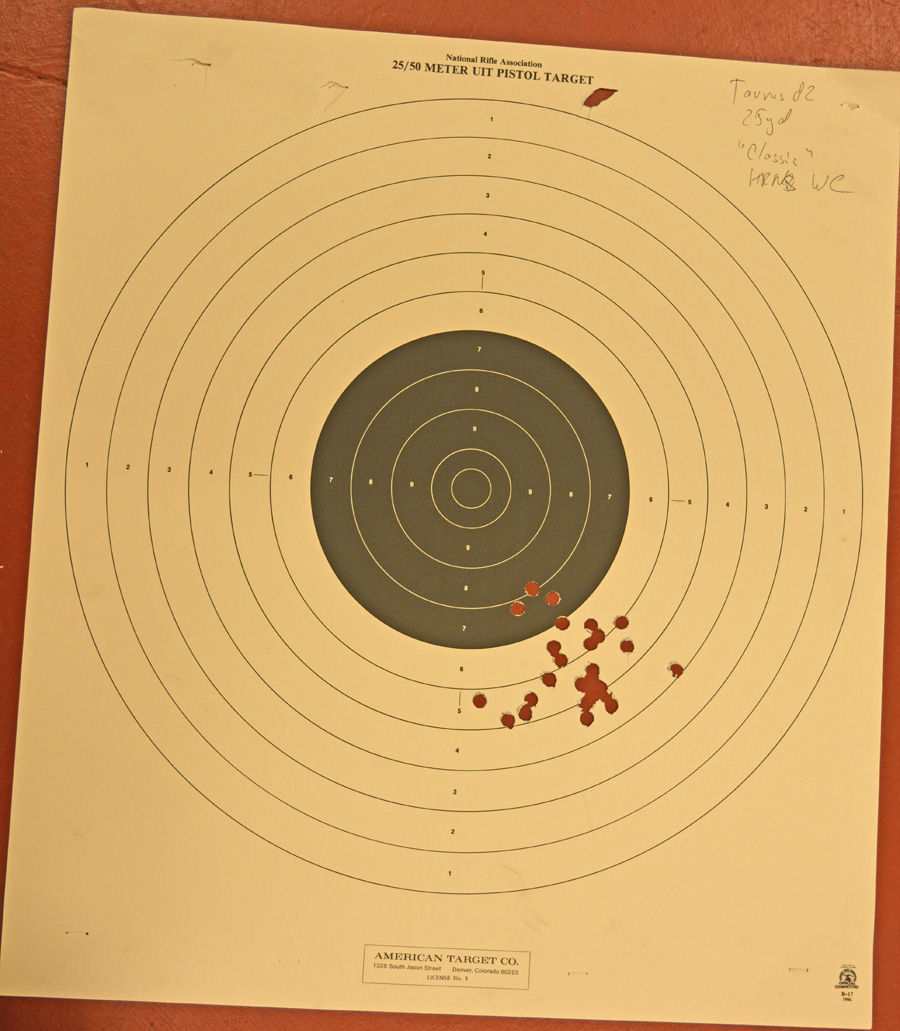
...followed by 25 rounds of Xtreme 148 grain copper plated flat point bullets over the same 2.8 grains of Bullseye.
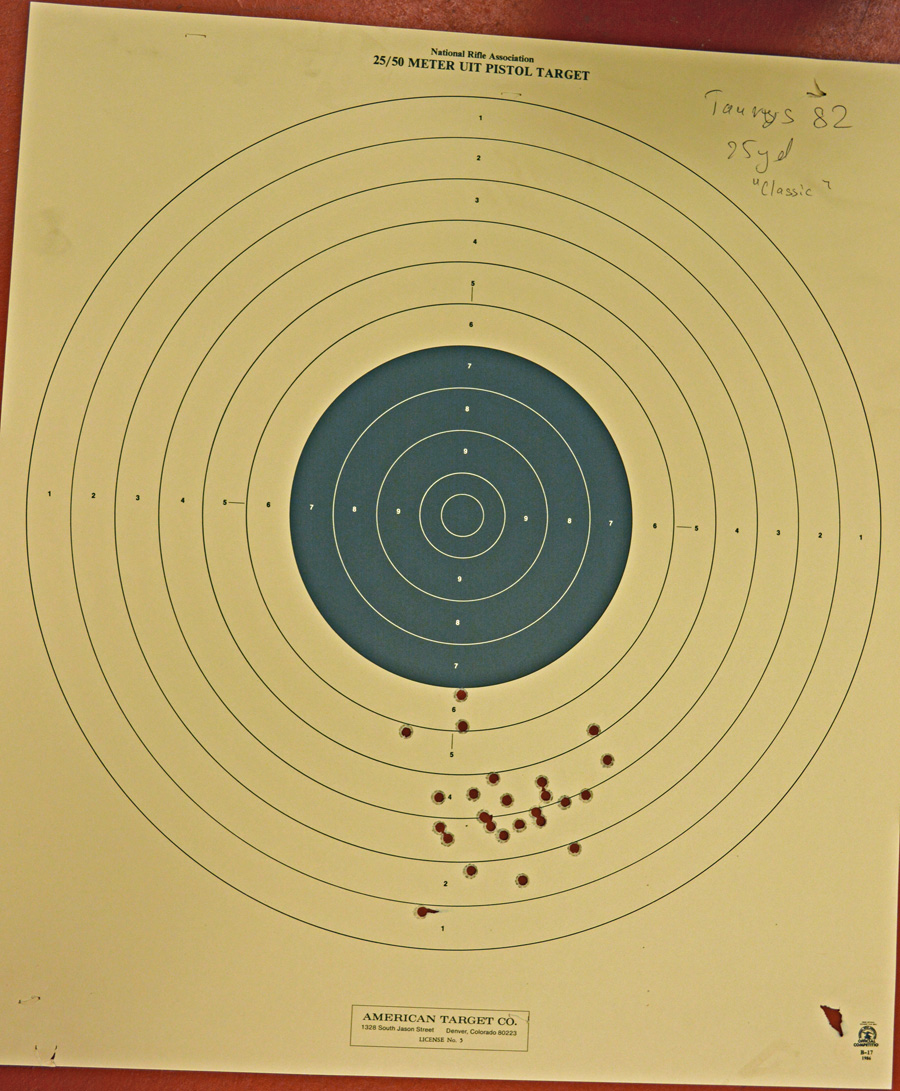
You would think that the second group is a lot worse than the first one, but this is where the target
analyzer actually helps - the standard deviation of WC bullets is 1.75, whereas the standard deviation of FP bullets is 2.07 - a difference
of only 0.3. In practical terms this means that 95% of the shots will be less than 4" off target at 25 yards - within the confines of
the black area on the standard pistol target. That is, if the point of impact were correct.
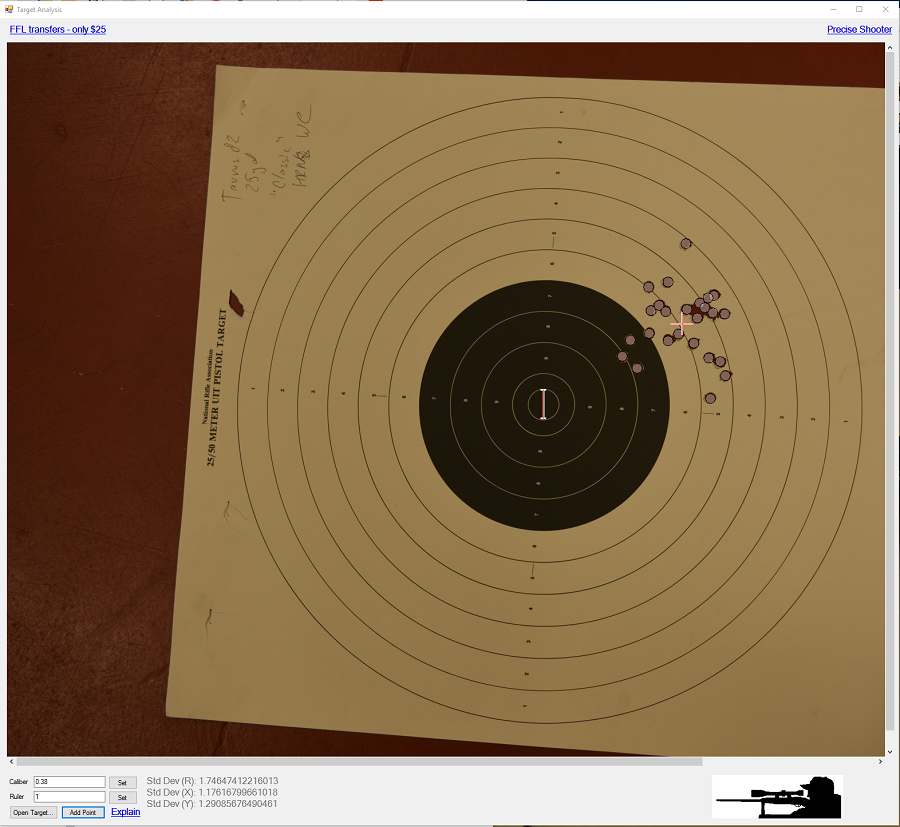
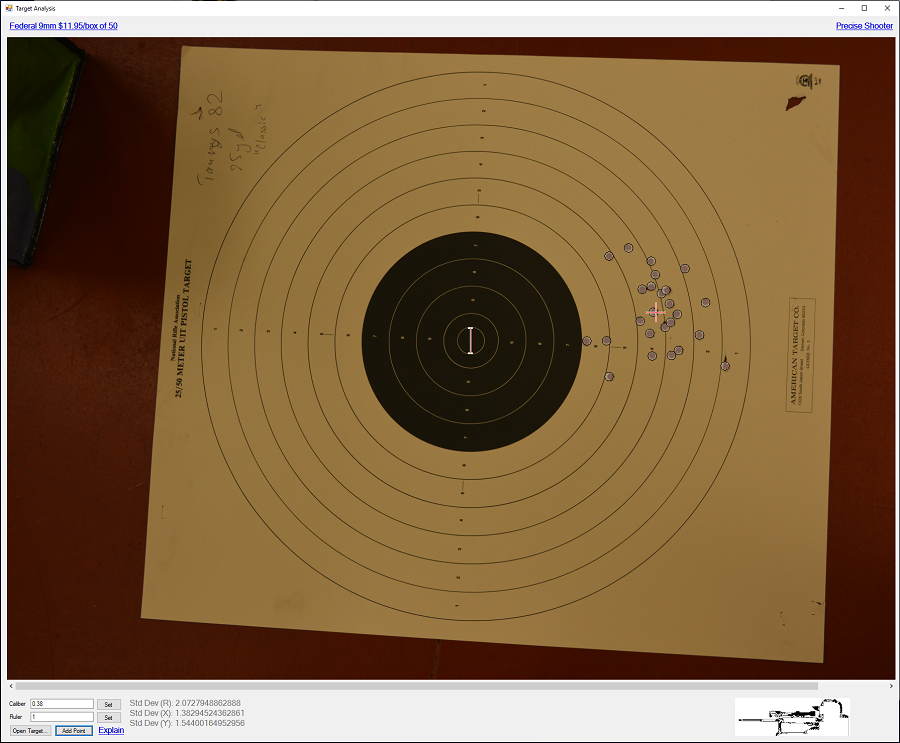
Unfortunately, point of impact was not correct. It was appreciably different, in fact, - the flatpoint bullets were 2.5" low, but only 1.5" to the right (the point of aim was
six o'clock - the bottom of the black area). This could be corrected by manipulating the front sight.
The wadcutters however were almost dead even vertically, but unfortunately good 3" to the right. The only way to correct this
would be by filing the sight channel - something I am obviously not very enthusiastic about.
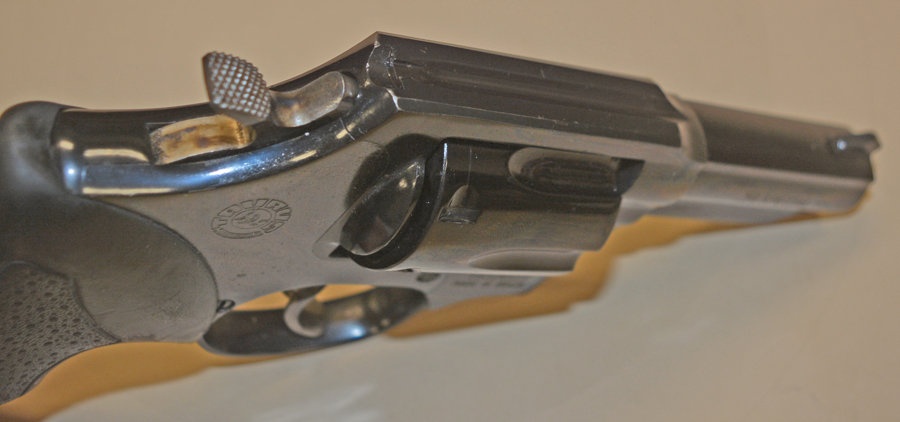
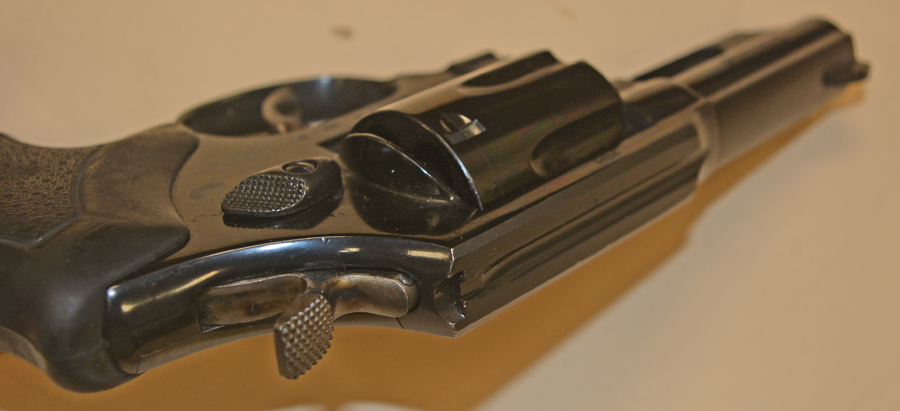
Day 2
The next two guns were also randomly pulled out of the heap. At this point I ran out of Hornady wadcutter reloads, and switched to X-treme bullets
wadcutters, same weight. As you will see, the groups were wider this time - I attribute this to different bullets and slightly less ideal visibility
at the range.
First had this target at 10 yards. As you can see, it's POI was quite low at 10 yards...

...and it was really way down at 25 (after the first 5 rounds, I moved from six o'clock position on the
black bulls eye to six o'clock position on the orange one):
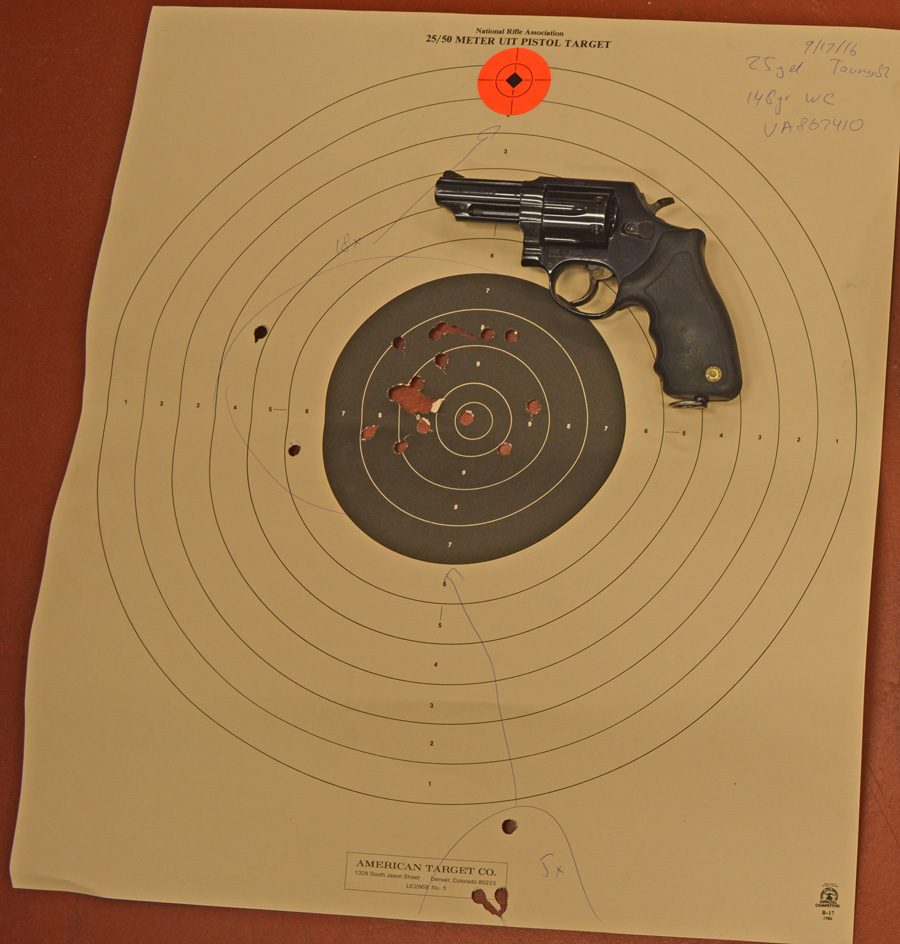
Target analysis produced standard deviation of 2.43.
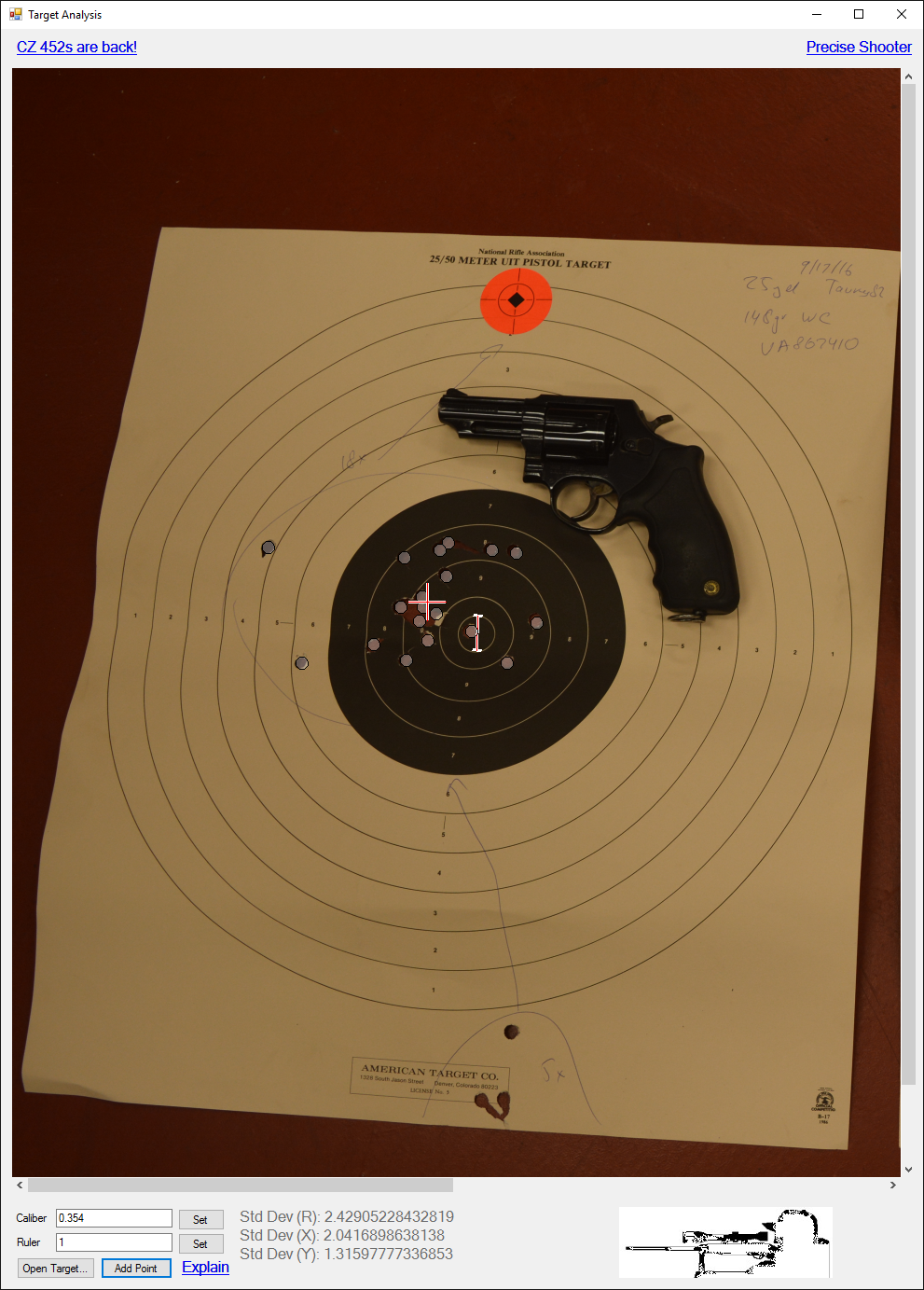
The second had this target at 10...

...and this at 25:
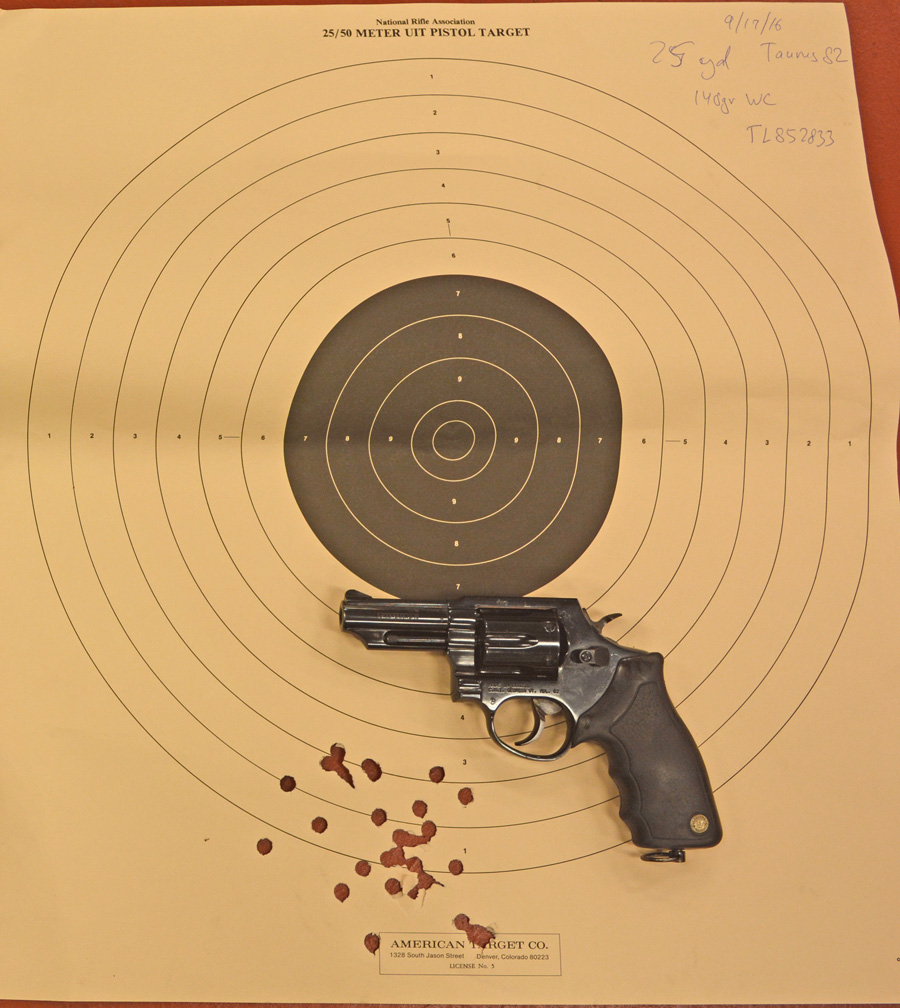
The standard deviation was 2.31, essentially the same.
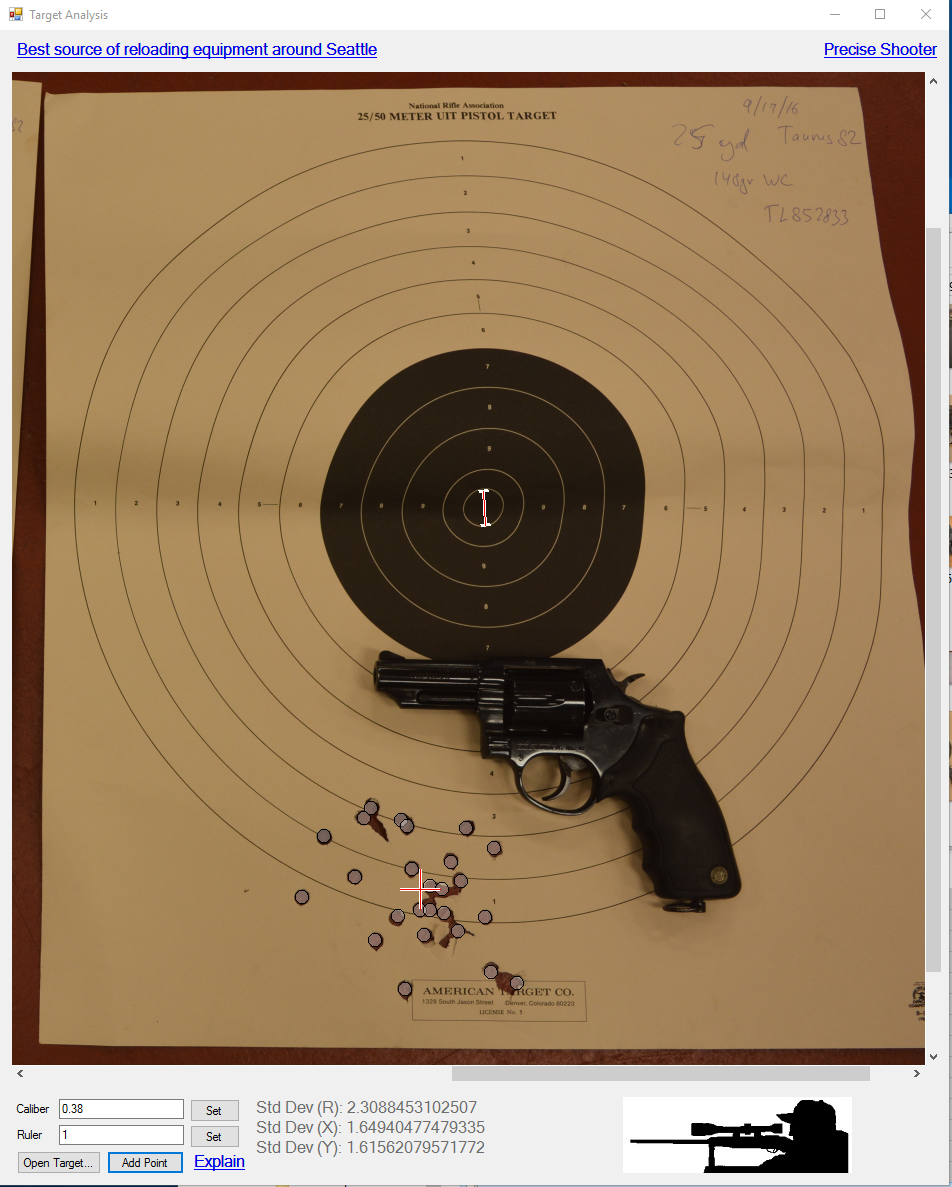
It was getting pretty dark, but I still shot 11 rounds of Federal HST loads, which were +P - five from one gun, six from the other.
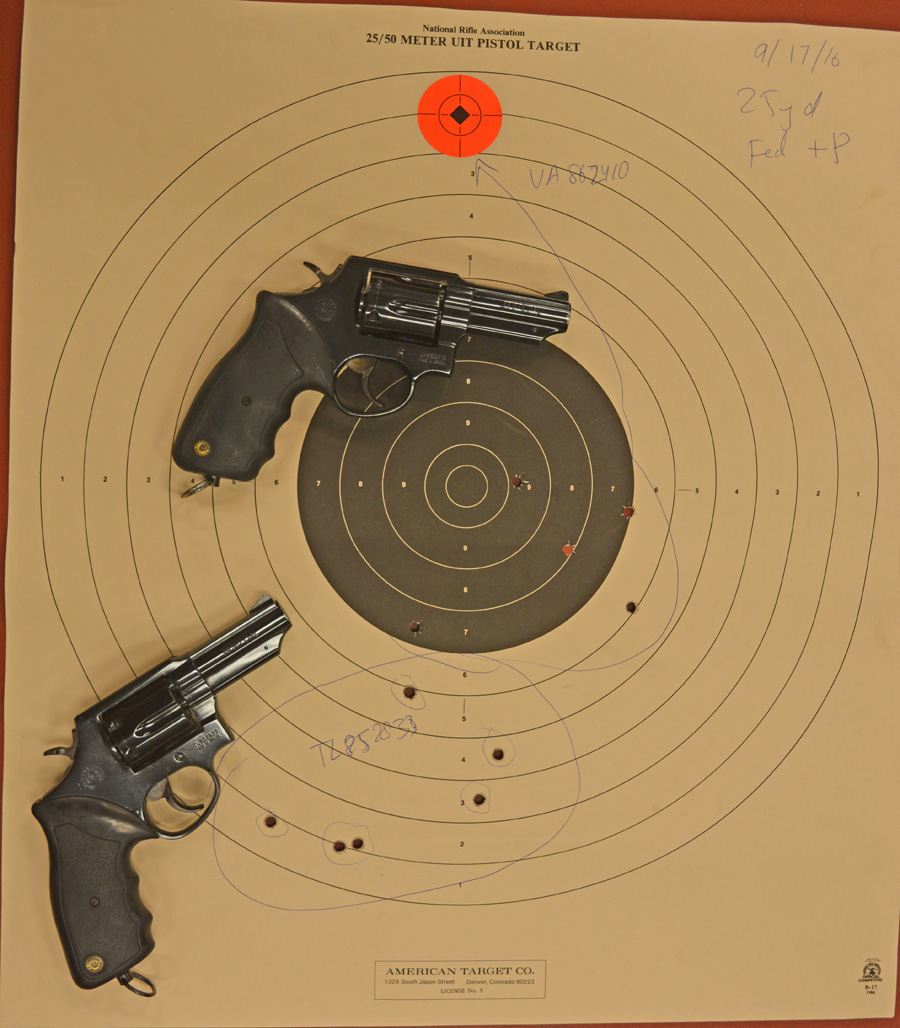
As you can see, the +P did not address the point of impact problem - it was 3.5" below point of aim (six o'clock on the black bullseye) for one
gun, and a whopping 10" below POA (six o'clock on the orange) for the other one.
It looks like filing down the front sight is inevitable. I will post the results when this is done. Stay tuned!
How does it compare to Smith & Wesson? The one I shot at the same range at the same time - model 67 - was
approximately 30% more accurate, and of course with adjustable sights any point of impact deviation is easily correctable.
Of course as of this writing, model 67s were going for $450 to just under $700 on Gunbroker, plus shipping, transfer, and tax,
whereas the Tauruses are selling for under $230 at our store, just over $250 including tax, so these guns are not in
the same weight category.